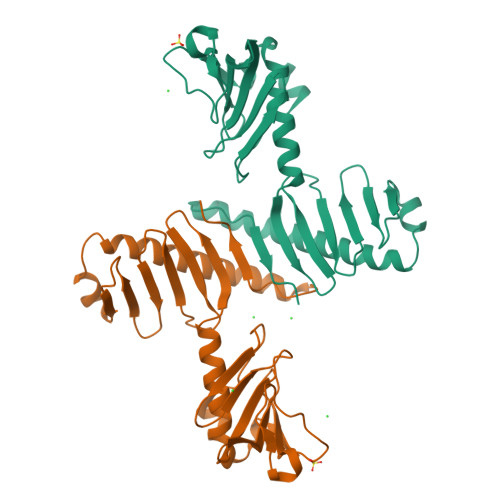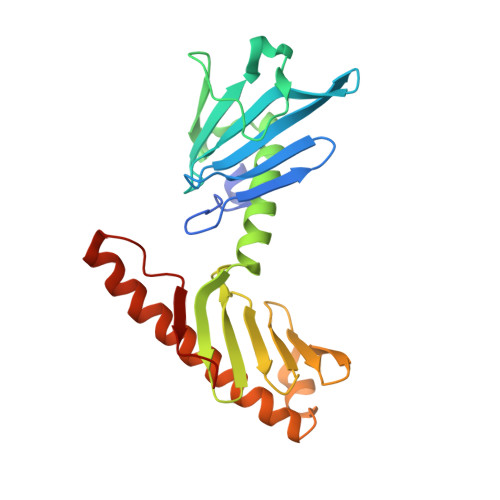Molecular basis for unidirectional scaffold switching of human Plk4 in centriole biogenesis.
Park, S.Y., Park, J.E., Kim, T.S., Kim, J.H., Kwak, M.J., Ku, B., Tian, L., Murugan, R.N., Ahn, M., Komiya, S., Hojo, H., Kim, N.H., Kim, B.Y., Bang, J.K., Erikson, R.L., Lee, K.W., Kim, S.J., Oh, B.H., Yang, W., Lee, K.S.(2014) Nat Struct Mol Biol 21: 696-703
- PubMed: 24997597
- DOI: https://doi.org/10.1038/nsmb.2846
- Primary Citation of Related Structures:
4N7V, 4N7Z, 4N9J - PubMed Abstract:
Polo-like kinase 4 (Plk4) is a key regulator of centriole duplication, an event critical for the maintenance of genomic integrity. We show that Plk4 relocalizes from the inner Cep192 ring to the outer Cep152 ring as newly recruited Cep152 assembles around the Cep192-encircled daughter centriole. Crystal-structure analyses revealed that Cep192- and Cep152-derived peptides bind the cryptic polo box (CPB) of Plk4 in opposite orientations and in a mutually exclusive manner. The Cep152 peptide bound to the CPB markedly better than did the Cep192 peptide and effectively 'snatched' the CPB away from a preformed CPB-Cep192 peptide complex. A cancer-associated Cep152 mutation impairing the Plk4 interaction induced defects in procentriole assembly and chromosome segregation. Thus, Plk4 is intricately regulated in time and space through ordered interactions with two distinct scaffolds, Cep192 and Cep152, and a failure in this process may lead to human cancer.
Organizational Affiliation:
1] Laboratory of Metabolism, National Cancer Institute, National Institutes of Health, Bethesda, Maryland, USA. [2] Advanced Institutes of Convergence Technology, Seoul National University, Suwon, Republic of Korea. [3].




















